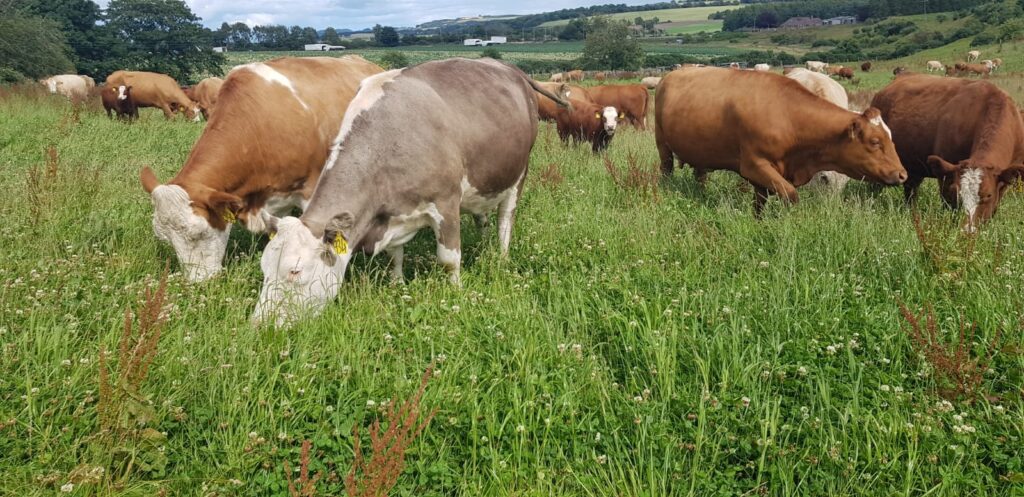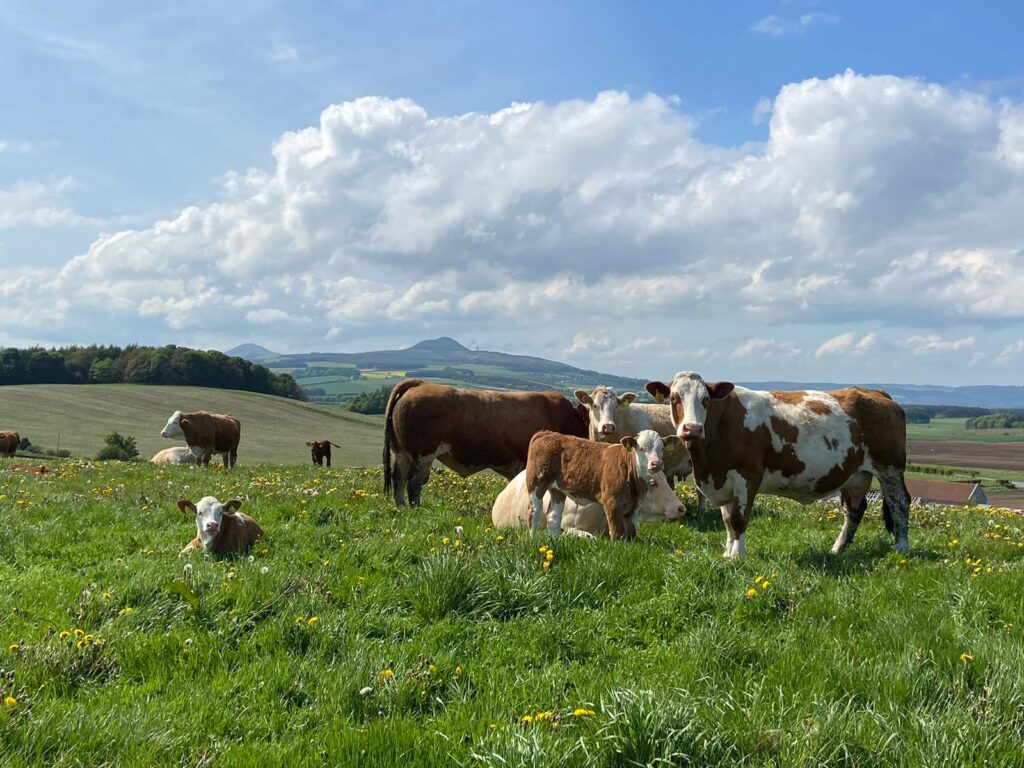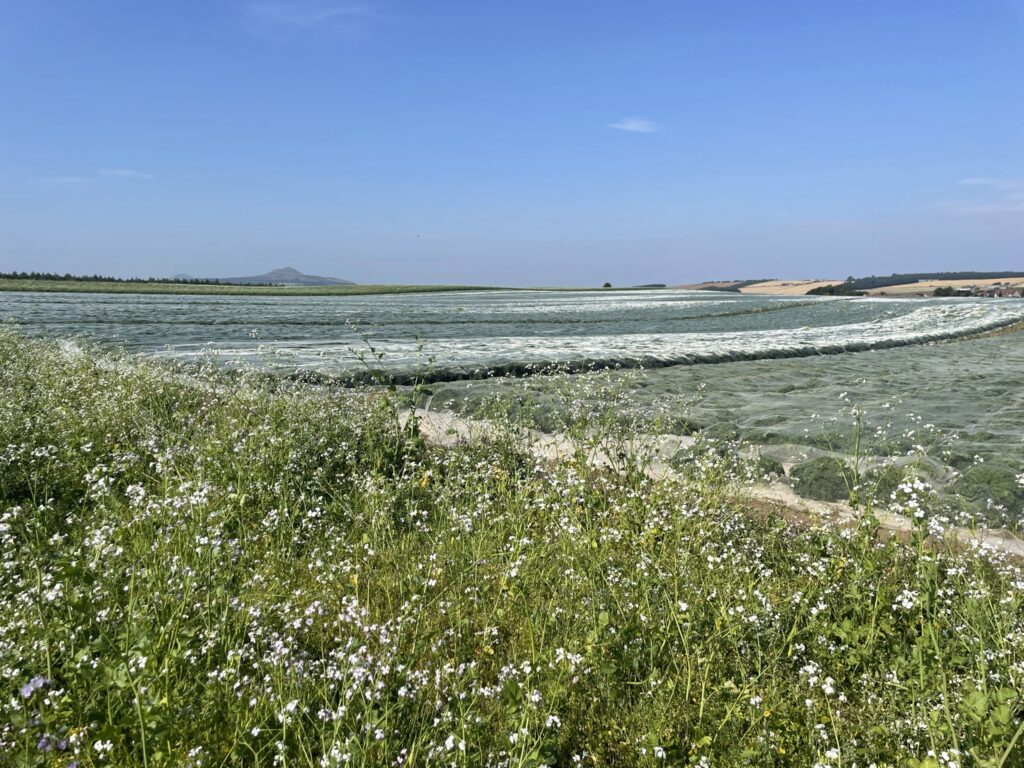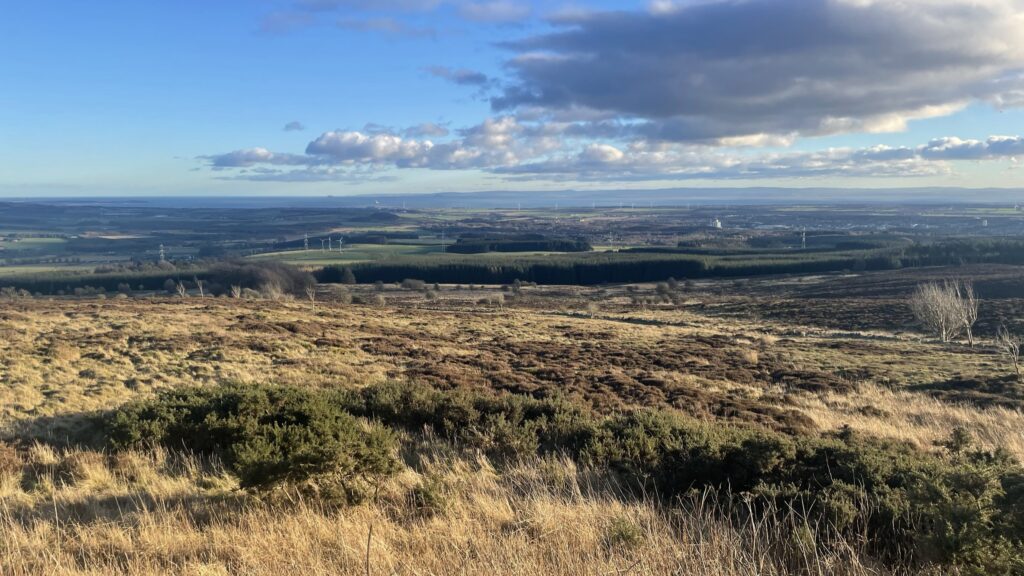Johnnie Balfour, Balbirnie Home Farms 1/3
Tell us about your farm, its location, size, altitude, climate, soils, enterprises, organic/PfL/other status

The herd grazing at Balbirnie
Balbirnie Home Farms is in the middle of Fife, 35 miles north of Edinburgh and we farm about 1200 hectares, a bit bigger with forestry included. Altitude ranges from 50m above sea level on the arable ground to about 200m on the hill.
We’re in the East of the country so it’s relatively dry, and rainfall ranges from 500mm (ish) at the bottom to 800mm (ish) at the top. Most of our soils are loams, a little bit lighter and a little bit heavier, with no sandy stuff nor what others might consider to be very heavy soil.

The farm's picturesque landscape
We run an arable enterprise with cereals and vegetables; wheat, barley, oats and beans and occasionally oil seed rape; carrots, cauliflowers, cabbages, potatoes and kale. Livestock are beef which is Pasture For Life certified. None of our enterprises are organic yet. We are working hard to get more of the cattle on the arable land and putting in some short term forage crops for them to eat. The ratio is 75% arable to 25% livestock but that’s changing. In addition, we have a forestry enterprise, and we rent out some properties that used to be workers’ cottages.
Share with us a general description of the biodiversity on your farm – essentially above ground (but reference to below ground if relevant) – both flora and fauna.
To sum it up, we’re not as diverse as we’d like to be. We have a number of different ecosystems across the farm - at the top we have heather moorlands that 40 years ago used to be a grouse moor, still with remnants of grouse butts on it. We’ve left it to rewild almost, and there is some fantastic natural regeneration of trees up there.
We have some biodiversity deserts, spruce plantations for example. Forestry is 400 hectares of the total, and of that, 150 hectares or so are a spruce plantation. The rest is all sorts of tree species such as larch, Scots Pine, beech, chestnut and oak, and the strips separating fields are made up of all kinds of species.
Our permanent pasture is in the higher fields, and the diversity in those is getting better. We had a programme of ploughing and replanting until 8 or 9 years ago. Most are rye grass heavy, but we are trying to change that through grazing management and by stitching in more diverse species.

Field margins with flowering plants
Coming down the hill, this is where our arable fields are, and we do what we can to increase the diversity within those fields. When we plant vegetables, they aren’t planted to the edges and all margins are given cover crops, with plenty of flowering plants.
We’re starting to fence arable fields to put in livestock during winter and summer, with mixed species cover crops in summer. This means we can rest the grass and increase the rotation by a month or so in August. The cattle are eating a 15-way mix for summer, it’s tall and they like it! There are vetches, clovers ad sunflowers over 2m tall with maize, buckwheat, linseed and more. That lengthens the grass rest period and enables us to increase the rotation on the arable fields.
To me, biodiversity increases by putting more things together. An arable rotation is usually a monocrop with occasional companions, a food crop tends not to be that high in biodiversity, but we’re trying to change that, with mixed cover crops for cattle to eat, introducing a margin on those fields to give them a rest from machine traffic, and to give something for insects and bees to enjoy.

The high view across the farm
Our summer cover crops cover about 40 hectares, less than we’d like, but every little helps. We also plant winter forage crops in our arable fields for the cattle and to ensure as few fields as possible are brown and empty in winter. We want them to be green all over for all the wildlife instead of in the hedgerows only.
We keep fields green to not to lose the soil, or the biodiversity underneath the soil, and we try to keep as many things living as long as we can. A consequence of growing more forage and the fact that it’s cheaper to put a cow in a field than a cow in a shed eating silage is that the cows are cheaper to look after. Paying attention to biodiversity can mean saving money not spending it.
One of the biggest spots we have in terms of biodiversity, is our SSSI which is 63 hectares and a birch bog. And as you’d expect, it’s wet and full of birch trees! But it’s full of deer, foxes, badgers and birds, and we let it be, we don’t manage it.



